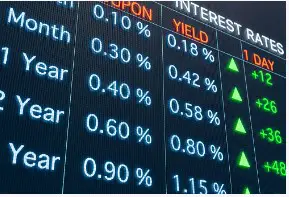The amount of return that an investor can realize on a single bond is called as Bond yield. The market for bond leaves a strong indication of confidence of an investor in government.
The Bond yield increases the income of the investor and if you have invested in a Bond with the remarkable interest rate, then the bond yield will also be remarkable increasing your income rate to the next level. It is highly necessary for an investor to look after the return with respect to the risk taken while investing in the bonds.
Types of Bond Yields
One of the key things to go through when you are performing investment on a bond is to evaluate Bond yield.
There is a different type of Bond yields, that are classified based on the amount of investment made as well a the return from the bond alternative to the risk taken.
Running Yield
This is a measurement of a return regarding a bond of each year that is to be the representation of current market value or price of the bond.This is a simple measurement that tells an investor that how much they can expect as a return from the current market.
A running yield represents a cumulative return or average yield of all investments that are held within that particular portfolio at current. Running yield may be similar to that of dividend yield, but for a change, it describes the entire group that is represented within the portfolio instead of describing the individual assets.
Nominal yield
It can be stated that Nominal yield is a Bond’s coupon rate that is determined by the percentage of the bond’s annual coupon payments amount.
The return rate of the Nominal yield may vary with the type of bond that you have to invest in. The types of bond vary the annual return such as
Floating Rate Bonds:
Any type of change in the referenced rate of interest can change the coupon payments or nominal yield.
Fixed Rate Bonds:
it will not change and the coupon rate will be fixed over the lifetime of the bond.
Indexed Bonds:
It can change with respects to the moments in the underlying index.
Yield to Maturity (YTM)
It is the average amount of return that an investor can expect from the issuer every year if they hold the Bond until it matures even after purchasing it in its market value.
The YTM value is determined using the value of the bond at its maturity, payment of coupon, capital profits or even loss etc that were incurred during the lifetime of the bond. This is used typically to compare different bonds that an investor is confused to invest in.
Yield to Call (YTC)
The bond’s yield at the time of call date is stated as YTC. The value of this is determined by market price and length of call date.
Yield to Worst (YTW)
It represents the most possible yield without the issuer going to the default state of the bond. This can be determined by using the worst-case scenarios and their probability.
If you really want to invest in bond funds you should know about how much minimum bond investment required. You can find our related article on that topic as well.

1 thought on “What Are The Bond Yields?”
Comments are closed.